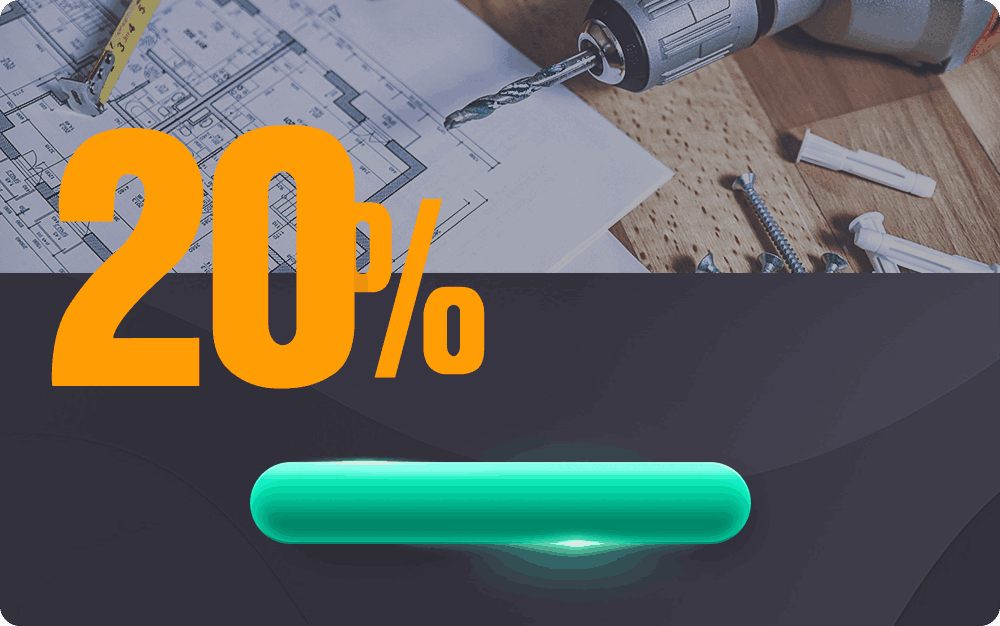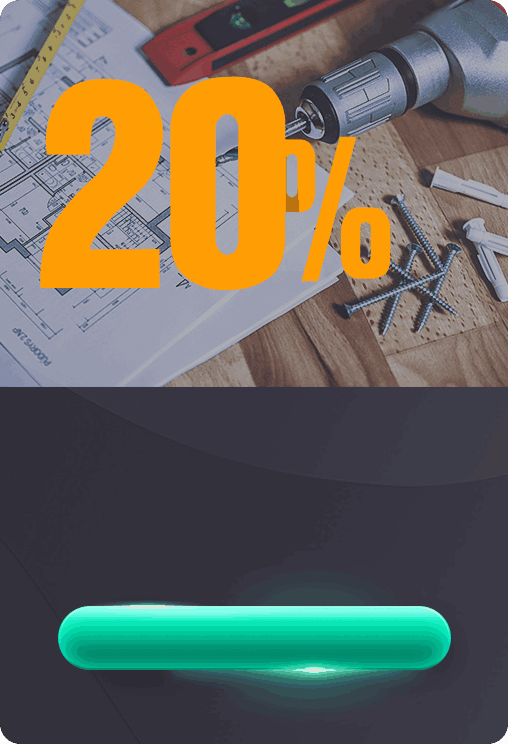Showing all 7 results
Home » LED Power Supply


the highest discount up to 25%
If you are a professional or want to work with us for a long time, please quickly register the account belonging to your identity after successfully registering and logging into your account to enjoy the exclusive identity price (the highest discount up to 25%)
Large stocks in Italian warehouses
Our products have passed EU certification standards

LED Power Supply
 Introducing our cutting-edge LED Strip Power Supply, designed to elevate your lighting experience. Engineered for seamless compatibility with LED strips, this power supply ensures a consistent and reliable energy source for vibrant illumination. Its compact design facilitates easy integration into various spaces, offering versatility in lighting applications.
Equipped with advanced technology, our LED Strip Power Supply delivers optimal performance, maximizing the lifespan and efficiency of your LED strips. The energy-efficient design not only reduces power consumption but also minimizes heat generation, enhancing safety and longevity.
Crafted with precision and durability in mind, this power supply guarantees a stable and flicker-free operation, providing a visually stunning and consistent light output. Upgrade your lighting setup with our LED Strip Power Supply, and transform any space into a captivating and well-lit environment. Elevate your lighting experience with the perfect synergy of innovation and reliability.
Introducing our cutting-edge LED Strip Power Supply, designed to elevate your lighting experience. Engineered for seamless compatibility with LED strips, this power supply ensures a consistent and reliable energy source for vibrant illumination. Its compact design facilitates easy integration into various spaces, offering versatility in lighting applications.
Equipped with advanced technology, our LED Strip Power Supply delivers optimal performance, maximizing the lifespan and efficiency of your LED strips. The energy-efficient design not only reduces power consumption but also minimizes heat generation, enhancing safety and longevity.
Crafted with precision and durability in mind, this power supply guarantees a stable and flicker-free operation, providing a visually stunning and consistent light output. Upgrade your lighting setup with our LED Strip Power Supply, and transform any space into a captivating and well-lit environment. Elevate your lighting experience with the perfect synergy of innovation and reliability.
SKU:
SA01
Rated 5.00 out of 5
SKU:
SA05
Rated 5.00 out of 5
SKU:
SA07
Rated 4.00 out of 5
SKU:
SA08
Rated 5.00 out of 5
What is led power supply and what does it do?
LED power supply is a regulated output device that regulates and outputs the power required to drive LED (light-emitting diode) lighting equipment, and some people call it an LED driver. It converts the incoming AC or DC voltage to the appropriate constant current or voltage required for the efficient operation of LEDs.LED power supplies play a key role in ensuring optimal performance and longevity of lighting equipment. They provide a stable and reliable power source, protecting LEDs from voltage fluctuations and supplying them with the necessary electrical parameters to function effectively.
Key features of LED power supplies include high efficiency, precise current or voltage control, and various protection mechanisms such as overload protection, short-circuit protection, and overheat protection. They are designed to meet the specific requirements of LED lighting applications, offering a range of output power options and compatibility with different types of LEDs.
What electrical appliances can LED driver be applied to?
LED lighting: LED power supplies can be used in household, commercial, landscape, street lighting and more life application scenarios.The led driver power supply provides stable current and voltage to ensure the normal operation and long life of the LED lights.
Advertising signs and light boxes: Many advertising signs and light boxes use LED technology, and 24v LED power supplies for led lights provide them with the power they need. They can drive LED modules or light strips to produce brilliant visual effects.
Interior decoration and lighting: LED power supplier are widely used in interior decoration lighting, such as recessed lamps, chandeliers, table lamps, downlights, etc. The led power supply 24v can meet the power supply requirements of LED lamps of different types and powers.
Automotive lighting: LED technology is used in many automotive headlights, taillights, interior lighting, etc. LED power supplies for car are used to provide the right amount of power to ensure proper functioning and efficient performance of automotive LED lamps.
Home appliances: led power supplier can also be applied to LED displays, indicator lights, backlights and other components in home appliances. They provide the required electrical energy for these devices.
Electronic displays and large screens: Indoor and outdoor electronic displays and large screens usually use LEDs as light sources. The LED power supply provides them with stable power to ensure high brightness and clarity of the display.
Industrial Lighting: Some industrial environments require high brightness and durability lighting solutions. Industrial LED power supply can be applied to industrial lighting, such as factories, warehouses, parking lots, etc.
LED Lighting Expert From Italian Brand – Kosoom
Kosoom can provide you with a wide range of LED power supply options, including 60W, 100W, 150W, 200W, and 300W.
No matter the size of your power requirements, we have you covered. Whether it’s for residential lighting, commercial lighting, landscape lighting, or street lighting, Kosoom’s LED power supplies deliver reliable and efficient electrical power. Our products employ advanced electronic technology to convert electricity into the appropriate current and voltage needed for LED lights.
With our dependable 60W to 300W led power supplier, you can ensure stable operation and long lifespan for your LED lights. Our power supplies offer stable current and voltage output, and are equipped with safety features such as overload protection, short-circuit protection, and overheat protection, ensuring the safety and reliability of your lighting system.
By choosing to work with Kosoom, you will experience high-quality LED driver products and exceptional customer service. We are dedicated to providing personalized solutions and prioritize quality and reliability. Regardless of the scale of your project, we can meet your LED power supply needs, enabling your lighting system to perform at its best.
Contact Kosoom now to select the LED driver that suits your requirements and brings outstanding brightness and performance to your lighting project.
FAQ About LED Driver
Why do I need an LED power supply?
LEDs operate on low-voltage DC power, typically requiring a constant current or voltage source. An LED power supply acts as an intermediary between the main power source (AC or DC) and the LED lights, providing the necessary electrical parameters for optimal performance and longevity.
An LED power supply, also known as an LED driver, is an essential component when it comes to powering LED lights. Here’s why you need an LED power supply:
Voltage Compatibility: LEDs typically require low-voltage DC power, usually around 12V or 24V, depending on the specific LED product. In contrast, the main power sources in most homes and buildings provide AC (alternating current) power at a higher voltage. An LED power supply converts this higher-voltage AC power into the lower-voltage DC power that LEDs need to function properly.
Regulated Output: LED power supplies provide a regulated and stable output voltage. LEDs are sensitive to fluctuations in voltage, and an unstable power source can cause flickering, reduced brightness, or even damage to the LEDs. The power supply ensures that the voltage supplied to the LEDs remains constant, ensuring consistent and reliable operation.
Current Regulation: Some LED products, especially high-power LEDs, require a constant current source rather than a constant voltage source. An LED power supply can regulate the current to ensure that the LEDs receive the correct amount of electrical current, preventing overcurrent that can lead to overheating and premature failure.
Efficiency: LED power supplies are designed to be highly efficient. They minimize energy losses during the conversion process, which helps reduce energy consumption and lowers electricity costs.
Longevity: Properly designed LED power supplies can extend the lifespan of your LED lights. By providing a stable and well-regulated power source, they reduce stress on the LEDs and other components, increasing their operational life.
Safety: LED power supplies are often equipped with safety features such as overcurrent protection, overvoltage protection, and short-circuit protection. These features help prevent damage to the LEDs and ensure safe operation.
Dimming and Control: Many LED power supplies are compatible with dimming systems and control protocols, allowing you to adjust the brightness of your LED lights as needed. This flexibility is especially important in applications where lighting levels need to be customized.
What is the difference between constant voltage and constant current led driver?
Constant voltage LED power supplies deliver a fixed voltage output (e.g., 12V or 24V), suitable for LED systems that require a stable voltage. Constant current led light driver provide a consistent current output (e.g., 350mA or 700mA), ideal for LEDs that require a regulated current for operation.
Constant Voltage LED Driver:
Output: Constant voltage LED drivers provide a stable and fixed voltage output, such as 12V or 24V.
Application: These drivers are typically used for LED lighting systems that are designed to operate at a specific voltage. Many LED strips, modules, and bulbs are configured to work with constant voltage drivers.
Regulation: The driver maintains a consistent voltage level across the connected LEDs. This is suitable for LEDs that have internal resistors to limit the current, as the voltage remains steady, allowing the LEDs to operate without fluctuations.
Flexibility: Constant voltage drivers are commonly used for applications where the LEDs need to be dimmed. External dimming methods, like PWM (Pulse Width Modulation) or analog dimming, can be used with these drivers to adjust brightness.
How do I choose the right led light driver for my lighting project?
To select the appropriate LED power supply, consider factors such as the total wattage of your LED lights, the required voltage or current, and any specific features or protections needed. It is essential to match the power supply’s specifications with the requirements of your LED lighting system.
Determine Total Wattage:
Calculate the total wattage of all the LED lights you plan to connect to the driver. This is done by multiplying the wattage of each individual LED fixture by the number of fixtures.
Voltage or Current Requirements
Identify whether your LED lights operate on constant voltage or constant current.
For constant voltage LED lights, note the required voltage (e.g., 12V, 24V).
For constant current LED lights, determine the required current (e.g., 350mA, 700mA).
Load Matching:
Ensure that the driver’s output specifications (voltage and current) match the requirements of your LED lights. It’s essential to choose a driver with the same or similar ratings to avoid overdriving or underdriving your LEDs, which can lead to performance issues or premature failure.
Wattage Capacity:
Select an LED driver with a wattage rating equal to or slightly higher than the total wattage of your LED lights. It’s a good practice to have some margin for potential future additions or adjustments.
Dimming and Control:
Determine if you need dimming capabilities for your LED lights. If so, select a driver that supports the dimming method you plan to use (e.g., PWM, 0-10V, DALI). Make sure your LED fixtures are also dimmable.
Efficiency and Power Factor:
Consider the efficiency and power factor of the LED driver. A higher efficiency driver will waste less energy as heat and may lead to energy savings over time. A higher power factor indicates better electrical efficiency.
Protection Features:
Depending on your application and environment, consider whether you need protection features such as overcurrent protection, overvoltage protection, short-circuit protection, and thermal protection. These features can enhance the safety and longevity of your LED lighting system.
Certifications and Compliance:
Ensure that the LED driver complies with relevant safety standards and certifications for your region. Look for certifications such as UL, CE, or RoHS.
Environmental Conditions:
Consider the environmental conditions where the driver will be installed. If it’s an outdoor or harsh environment, select a driver rated for those conditions, typically denoted by an IP (Ingress Protection) rating.
Brand and Quality:
Choose a reputable brand or manufacturer known for producing high-quality LED drivers. Quality drivers are more likely to provide reliable performance and last longer.
Consultation:
If you’re unsure about the appropriate driver for your project, it’s a good idea to consult with a lighting professional or an electrical engineer who can provide specific recommendations based on your needs.
Are LED power supplies dimmable?
Yes, many LED power supplies are dimmable, allowing you to control the brightness levels of your LED lights. However, it is crucial to ensure compatibility between the dimmer switch/controller, the dimmable led driver, and the dimmable LED lights to achieve smooth and flicker-free dimming performance.
Can I connect multiple LED lights to one LED power supply?
Yes, depending on the power supply’s wattage and the total wattage of the LED lights, it is possible to connect multiple LED lights to a single power supply. However, it is crucial to ensure that the total wattage does not exceed the power supply’s maximum rating.
How long do LED power supplies typically last?
The lifespan of an LED power supply can vary depending on factors such as the quality of the power supply, operating conditions, and usage. On average, led electronic driver are designed to last between 30,000 to 100,000 hours, providing long-term reliability for your LED lighting system.



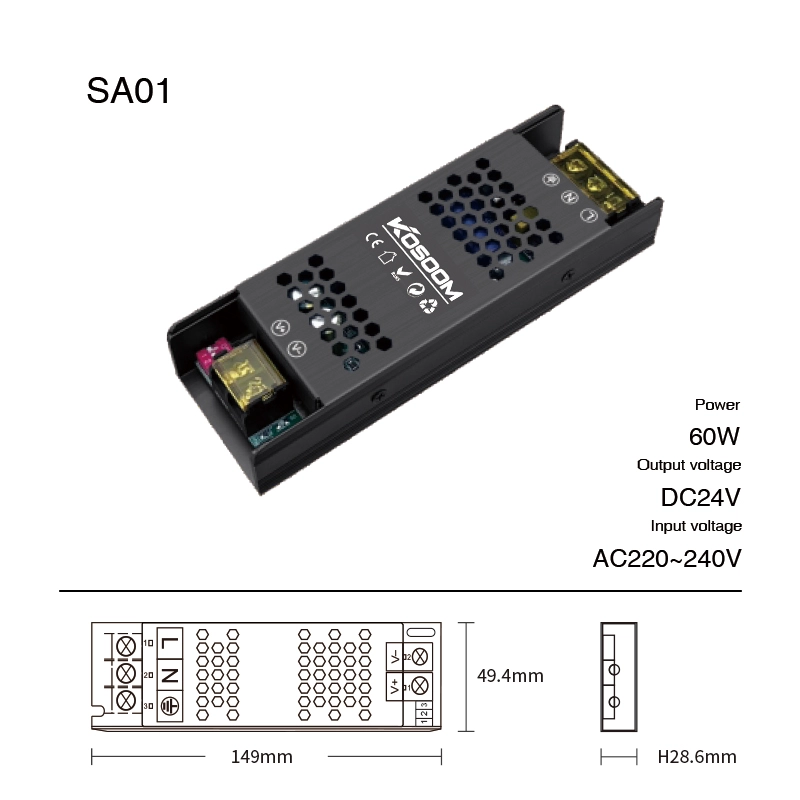
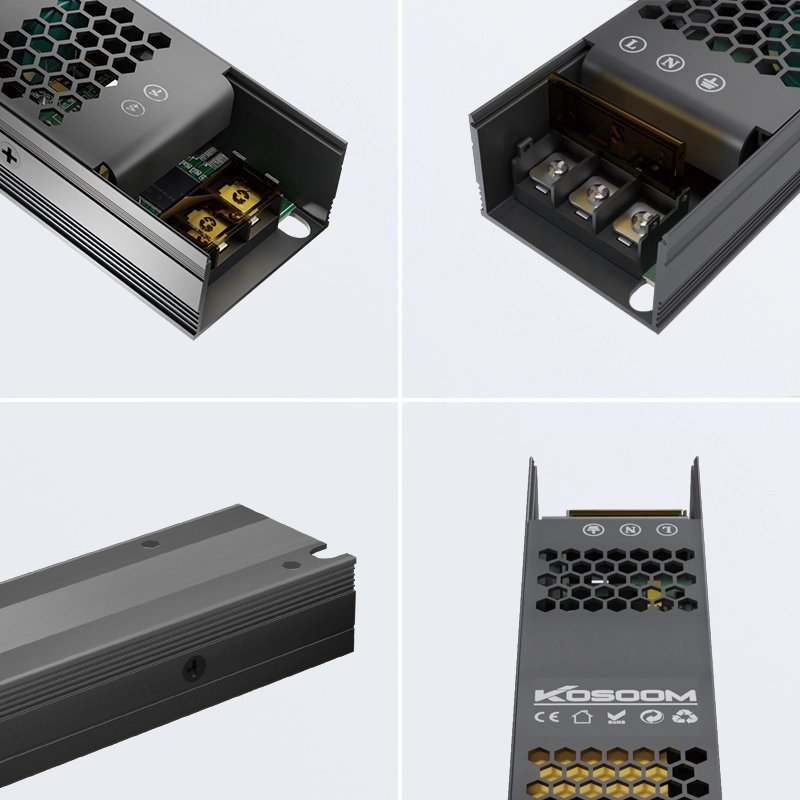
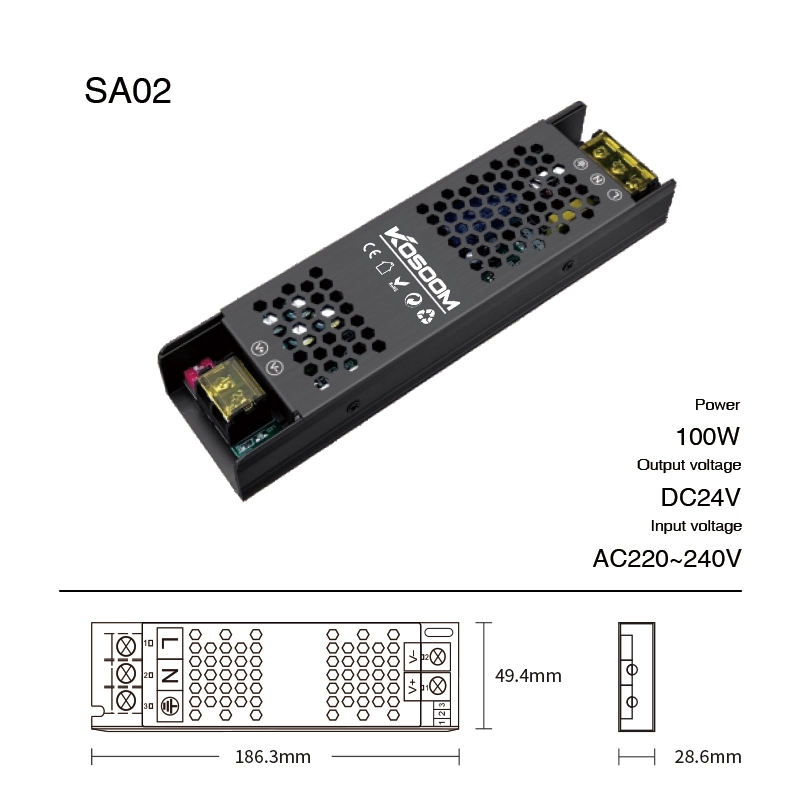
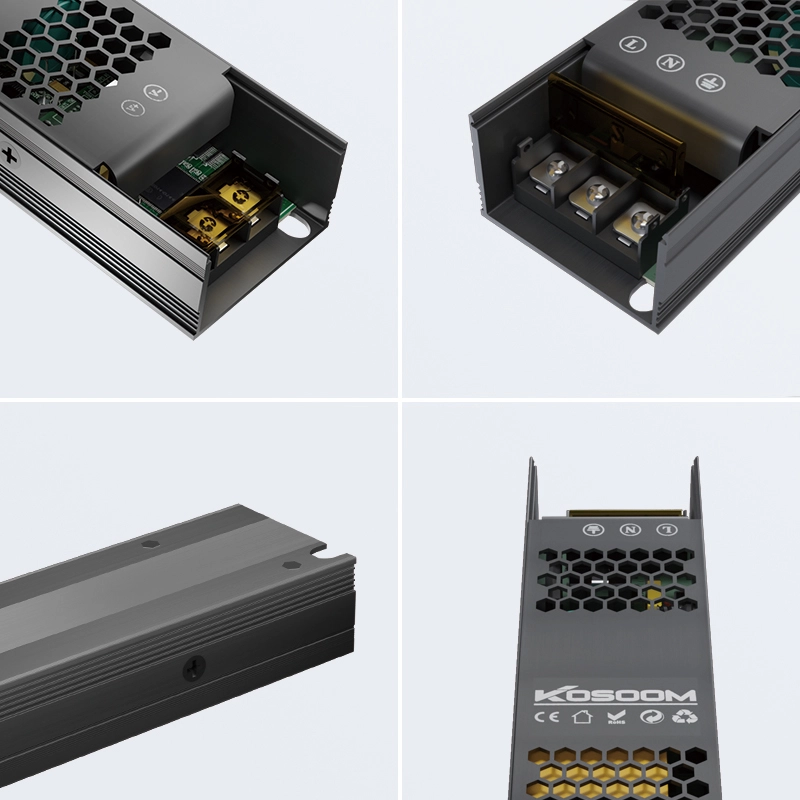
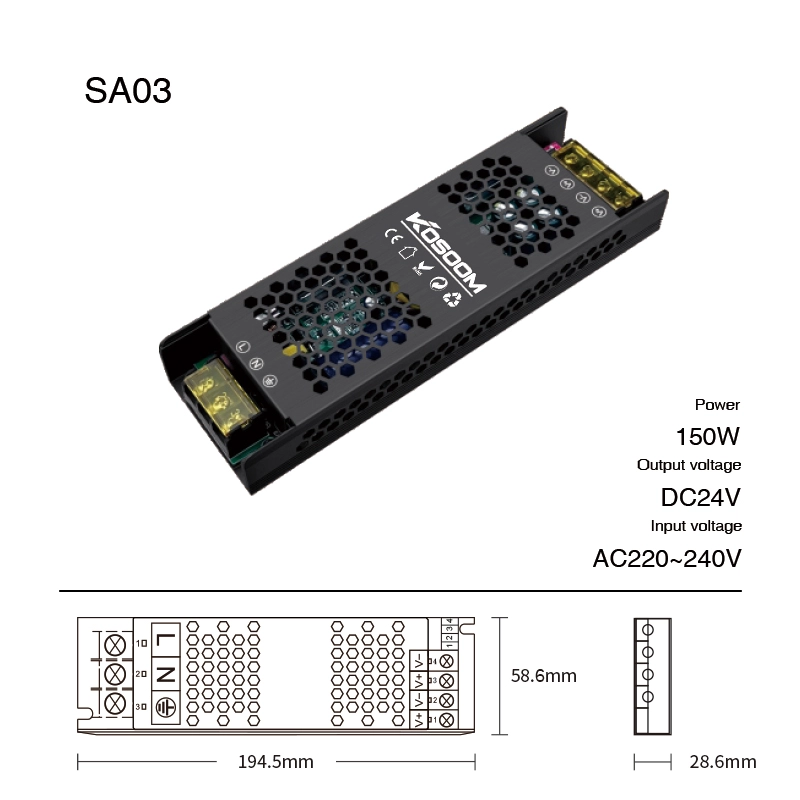
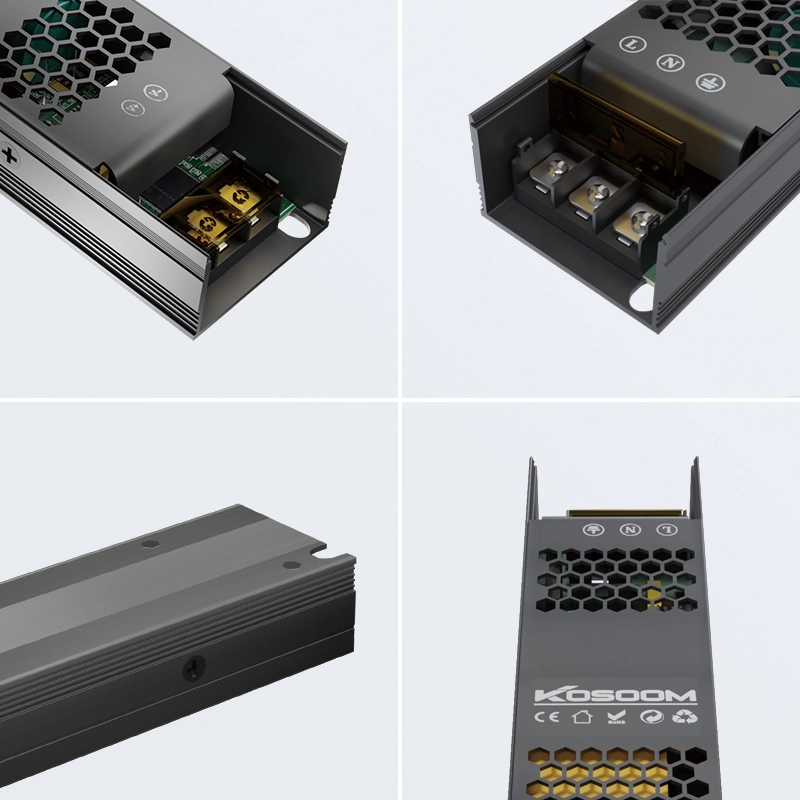
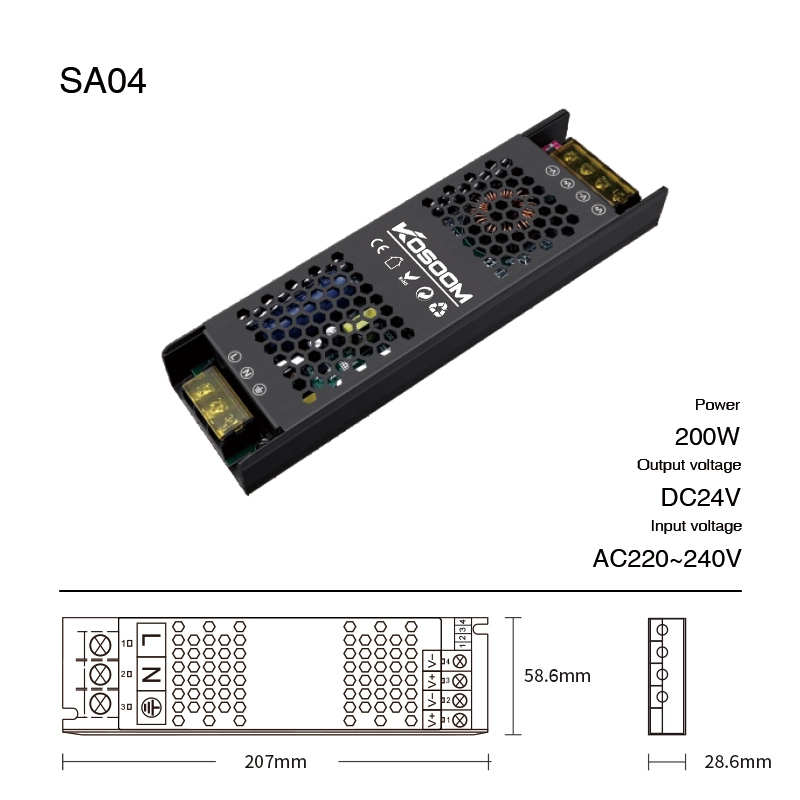
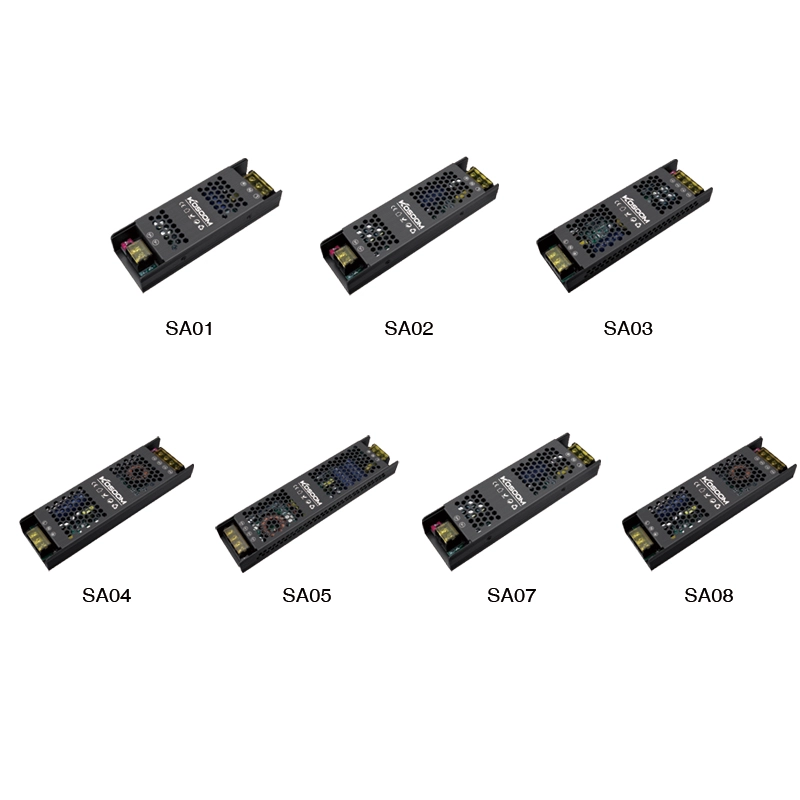
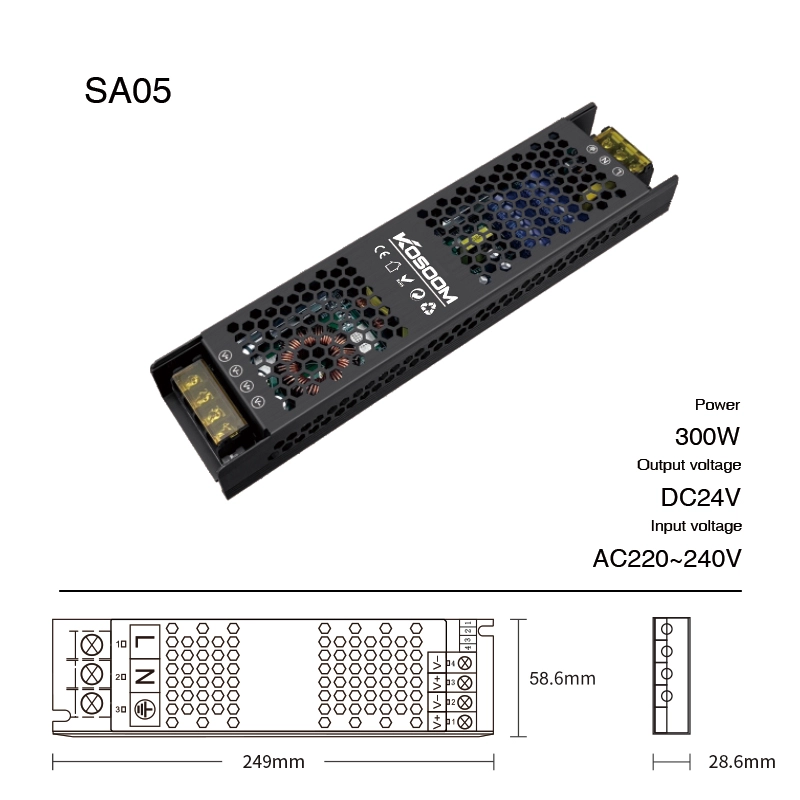
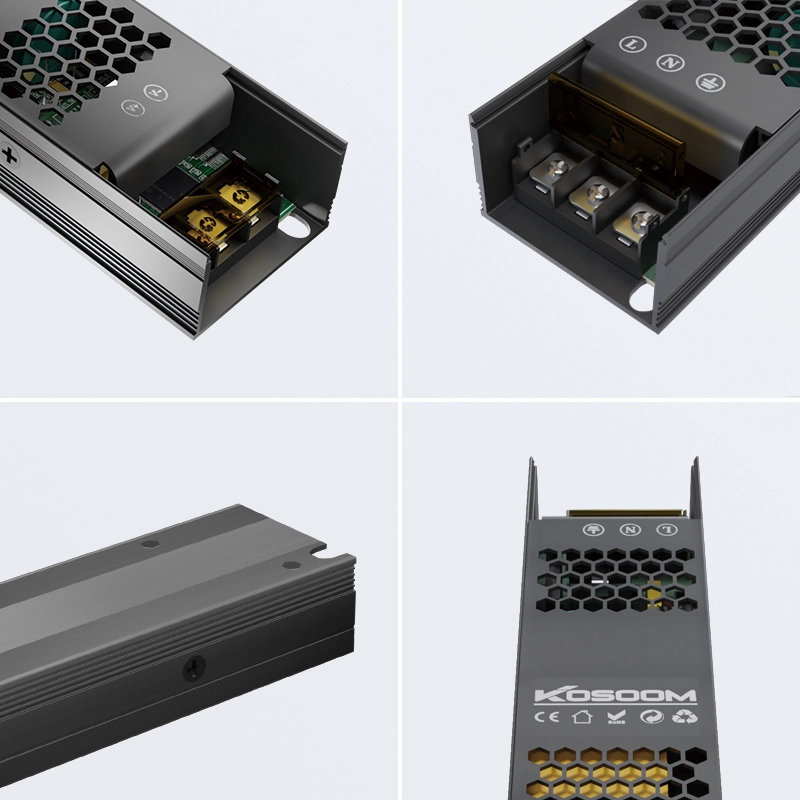
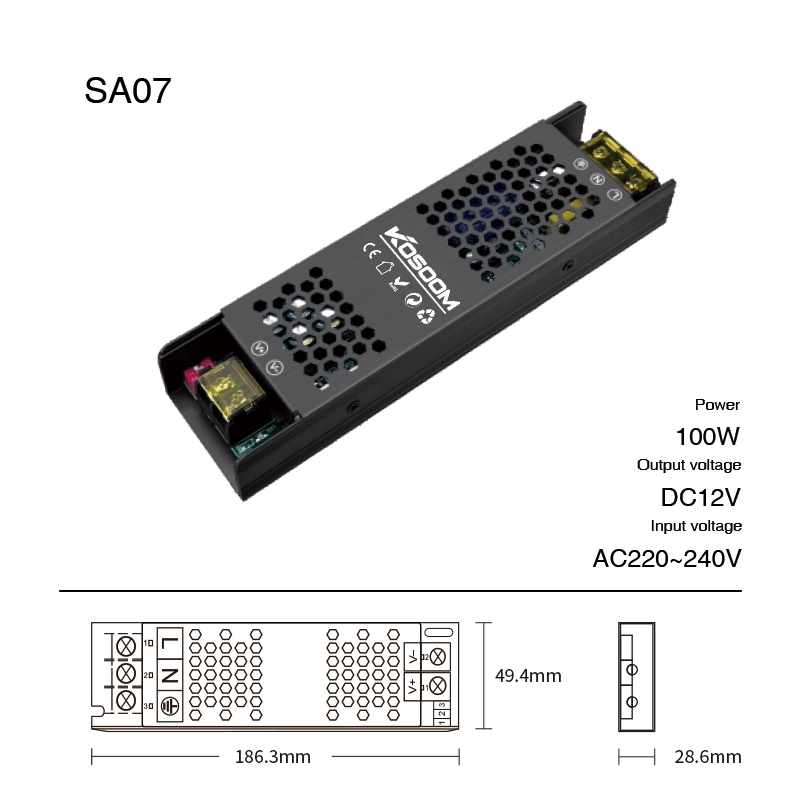
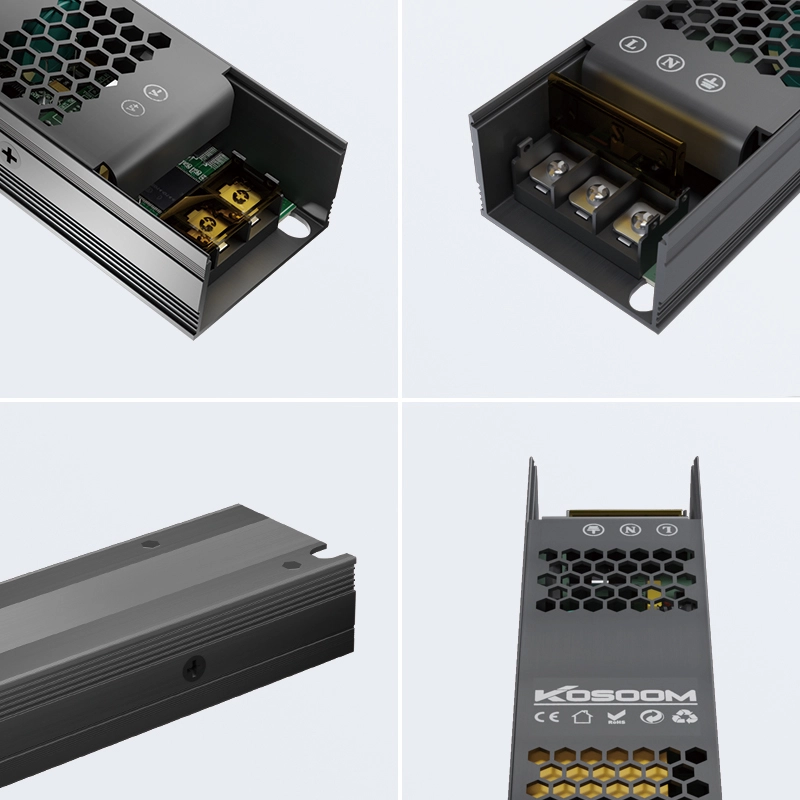
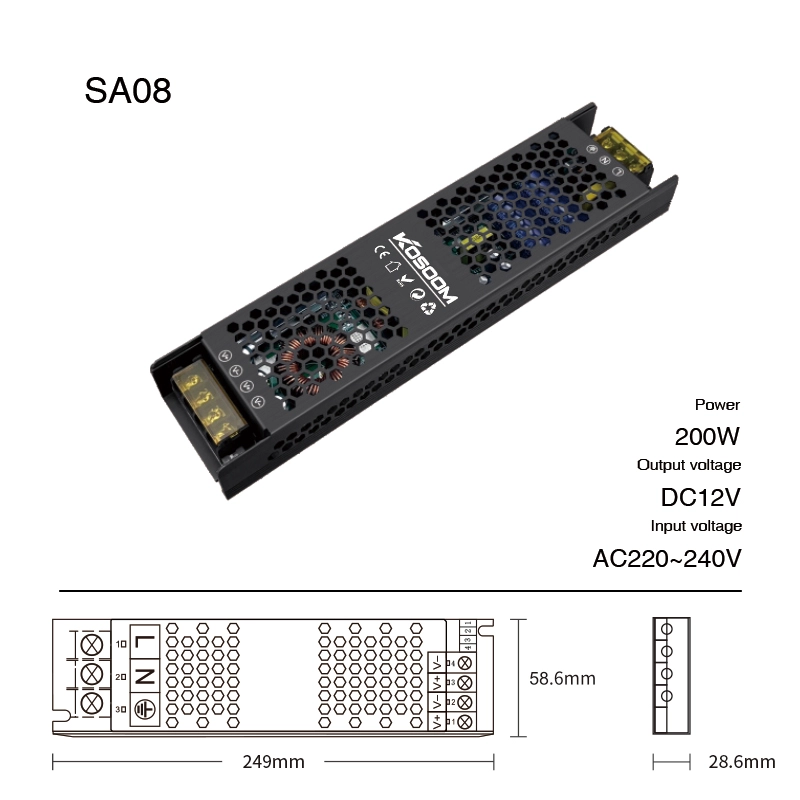
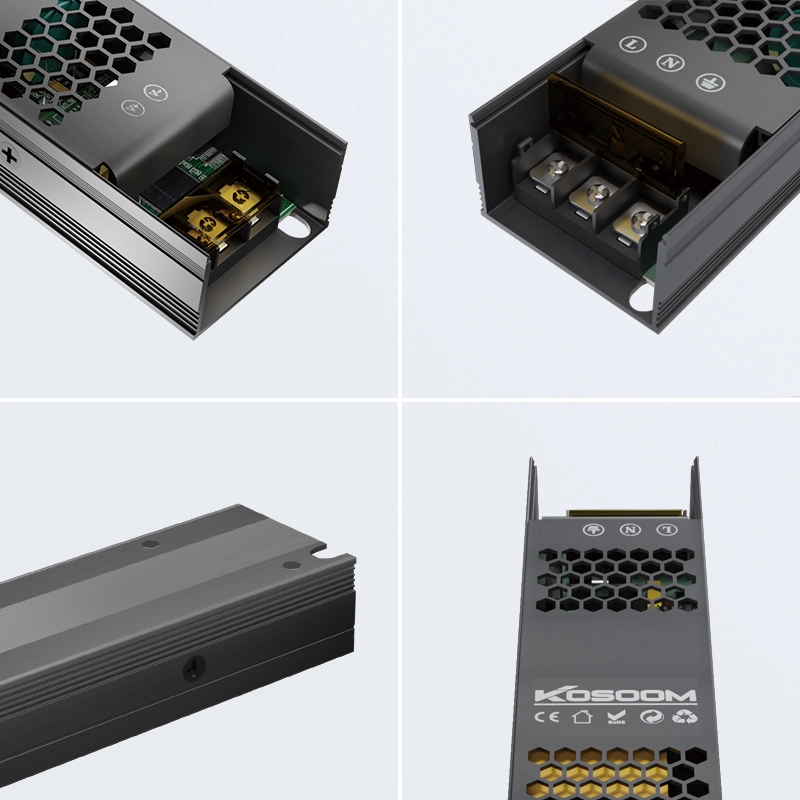







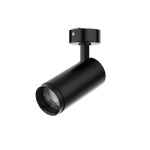 Ceiling Spotlights
Ceiling Spotlights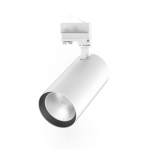 Indoor Spotlight
Indoor Spotlight Recessed Spotlights
Recessed Spotlights